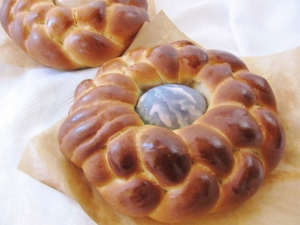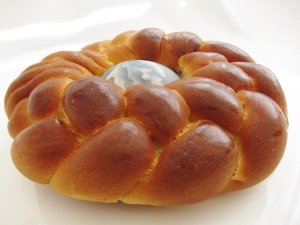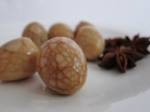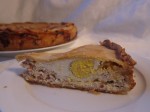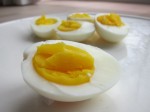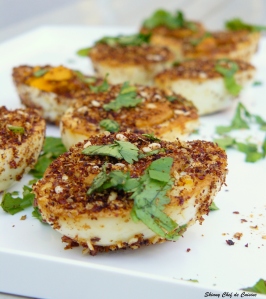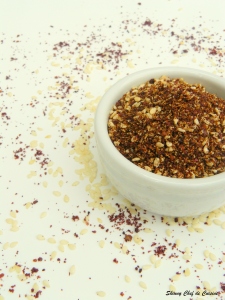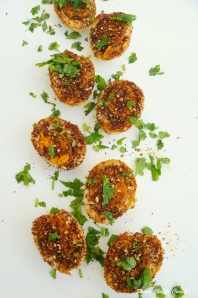Summer is here – well, officially it started yesterday, but the weather does not seem to be taking much heed. It has been grey, cool and wet.
It might not be a perfect warm day out there, but I still feel all summery. I am not sure if it is the sunflowers smiling over at me from the table or the sunny plate of food I just enjoyed; a light quinoa salad studded with red beans and golden mango.
I made this dish for the first time a few nights back as part of a little “end-of-the-work-week-feast”. At first I was not convinced the mango would be necessary. So I started by mixing all the other ingredients together: some cooked quinoa, a small can of beans, chopped spring onion and a crisp citrus mustard dressing. I was already quite happy with the result. But it was only when I decided to add the mango that this dish turned into something special. All the flavours pair beautifully, but I think the real magic is in the contrast between the sweet melting mango and the little pops of earthy quinoa.
Ingredients
(hardly altered from the blog ‘Taste Love and Nourish‘)
Serves 4
Salad
200g of red kidney beans (about 1/2 can)
1 ripe mango
1 spring onion
about 1-1 1/2 cups of cooked quinoa
2 tbsp dried cranberries or currants
Vinaigrette
juice of 1/2 lemon
juice of 1 lime
2 tbsp olive oil
1/2 – 1 tsp Dijon mustard
1/2 tsp salt
1/4 tsp ground cumin
Topping
1 tbsp flat-leaf parsley
1 tbsp pumpkin seeds
Recipe
- Rinse the beans well.
- Cut the mango into cubes.
- Slice the spring onion into thin rings.
- In a blow combine the quinoa with the beans, mango and spring onions.
- If using, cut the cranberries into smaller pieces (currants do not need to be cut). Add to the salad.
- In a small bowl combine all the dressing ingredients: lemon- and lime juice, oil, mustard, cumin, salt and pepper.
- Pour the dressing over the salad and carefully combine.
- If you have the time, keep in the fridge for 1 hour. Then allow to come to room temperature for 15 min. Salad is fine in the fridge for lunch or dinner the next day.
- Before serving. Chop the parsley and sprinkle over the salad together with the pumpkin seeds.
Tips & Variations
Consider some of the following
- Use red instead of regular quinoa (used in the original recipe)
- Use black beans instead of kidney beans (used in the original recipe)
- Add frozen sweet corn kernels (used in the original recipe)
- add avocado cubes or slices
Serve with
- As part of a vegan dinner: spicy sweet potato, guacamole, green asparagus and strawberry salad with tortillas
- Tandoori chicken drumsticks
- Lambchops
More quinoa recipes
















